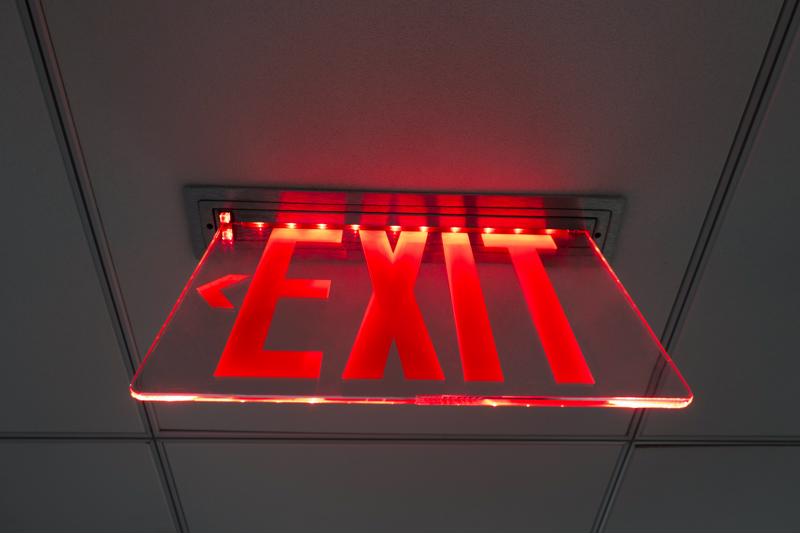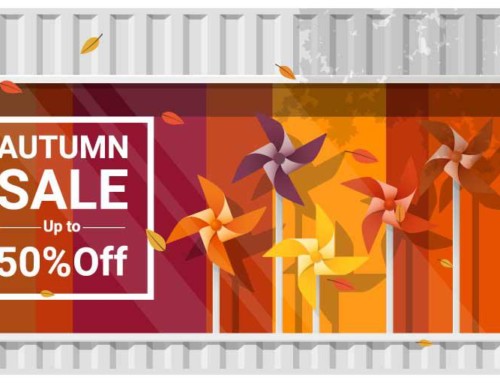It’s true what they say – you never get a second chance to make a good first impression. And one of the best ways to turn heads is with an acrylic-crafted sign.
When customers step inside the lobby area or first enter a building, the look and feel of a high-quality acrylic sign is the perfect way to showcase your brand loudly and proudly. Acrylic provides all the visibly impressive aspects of glass, but for a price that’s right and a level of strength that’s virtually unparalleled.
There’s a lot more to acrylic than meets the eye, so you may be surprised by the variety of physical and logistical advantages that derive from acrylic signage.

What is acrylic?
Acrylic is a glass substitute that is clear, rigid substrate made from a unique polymer and is available in a range of optical clarities and colors. While acrylic is most commonly sourced in optically clear, it can also look like etched glass with multiple frosted white translucent options, and it comes in many colors like white, black, translucent or opaque others.
It’s strong – very strong
Aside from its uncanny resemblance to glass, acrylic is perhaps best known for its durability and strength. Where glass comes up short, acrylic more than picks up the slack, with approximately five times the level of hardness by comparison. This makes acrylic an ideal material to use for signage in a variety of environments simply because it won’t shatter as easily or as the same way glass does.
“Acrylic offers greater light transmission compared to glass.”
Another advantage acrylic has over glass is light transmittance. This is saying something, as virtually anyone can attest to the sheen and brilliance glass can cast when the sun shines brightly. But acrylic goes above and beyond in this regard, offering 92% light transmission to 90% for glass. Many point of purchase displays can incorporate edge lighting into their header signs or panel graphics to steer eyes.
The optical clarity makes a difference when printing images second surface and the viewer must look through the material. Alternative clear materials like PETG or polycarbonate have slightly colored hues, which changes the look of the printed image when looking at a second surface print.
Comes customized in thick or thin sheets
Then there’s the thickness level. Acrylic can come in various widths and thicknesses of which contribute to brilliance, depth, and strength. When large graphics are needed, it’s important to consider that acrylic’s most commonly available at 48″ x 96″ sheet sizes and thicknesses from 0.060″ to 1.0″.
Some scratches can be buffed out
No substrate is entirely flawless, and that includes acrylic. However, there are a variety of tricks of the trade that can compensate for its shortcomings.
Scratching, for example, is one of its downfalls when compared to glass because it is softer than glass and thus more susceptible to scratching. However, acrylic is a very hard plastic and not as scratch prone as clear materials like PETG. You can guard against scratch development by requesting a scratch-resistant coating during the customization process. Plus, if scratches do develop and they’re relatively small, you can apply a special polish that may help to mask them so they aren’t as noticeable. The same can’t be said for glass – if scratches develop, the whole thing may need to be replaced. That you don’t need to do this with acrylic also speaks to its cost-efficiency and resiliency.
“You don’t need an adhesion promoter with digital acrylic.”
Another potential drawback with acrylic is it sometimes requires special surface treatment for better ink adhesion. This inherent issue is solvable through the use of an adhesion promoter, but this can be expensive and time-consuming depending on how much ink you seek to apply to the material. Another option is to use digital acrylic, which is a surface treatment done by the acrylic supplier to make digitally printed inks bond to the acrylic surface better.
Digital acrylic is custom-designed to deliver the same strength, durability and shatter-resistance as traditional acrylic, but its main perk lies in the fact that you don’t need an adhesion promoter in order for UV curing ink to effectively stick. In many ways, digital acrylic is akin to Plexiglass sheets, but optimized so it’s better used for your various signage and display purposes. Furthermore, it maintains the optical clarity of regular acrylic and can be coated to guard against scraping.
If quality assurance is what you need, you’ll get it in spades at Hopkins Printing. We use acrylic in many of our products. Stop by or contact us online today and we’ll be happy to explain why we’re the best for acrylic and all your specialty printing needs.



